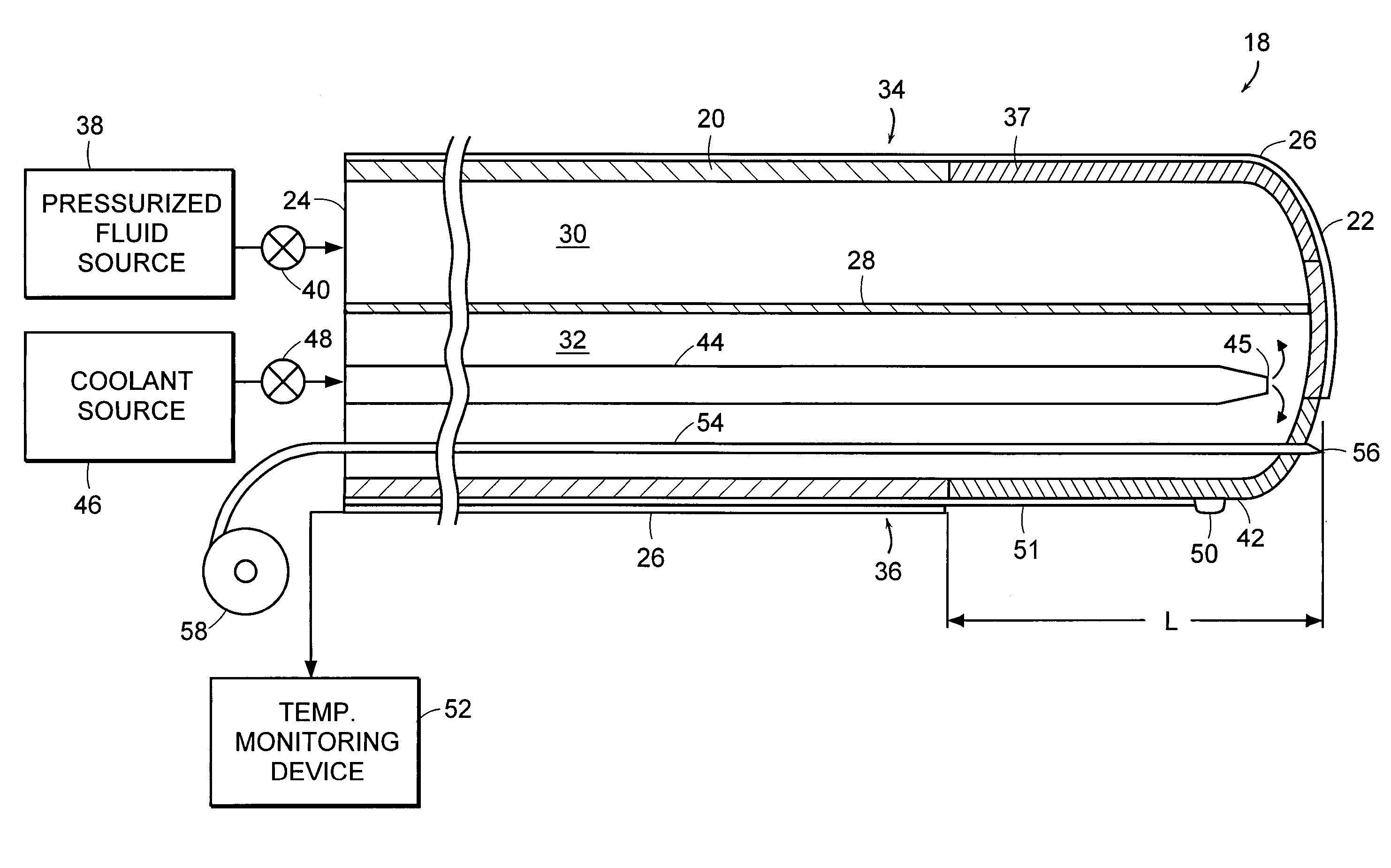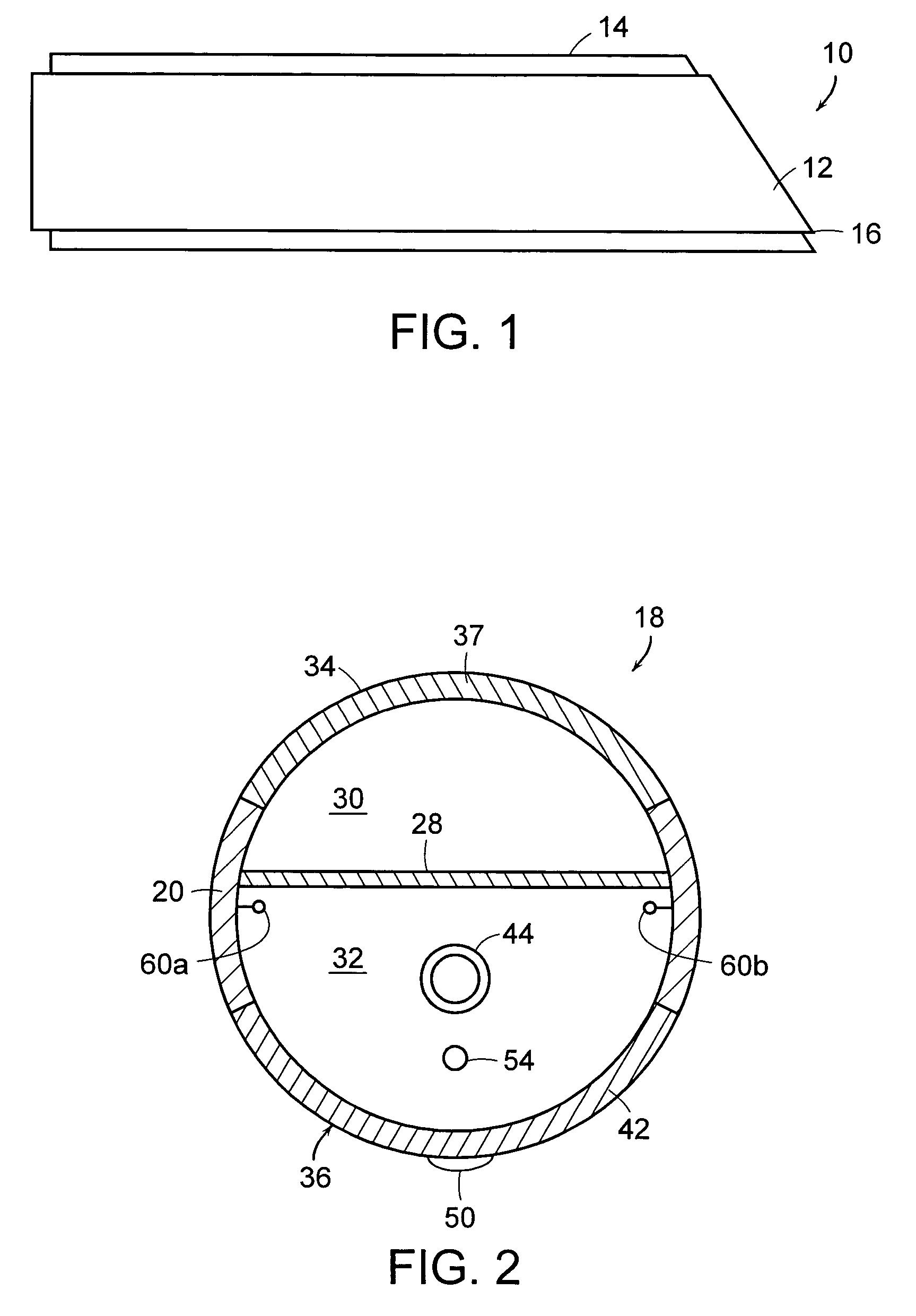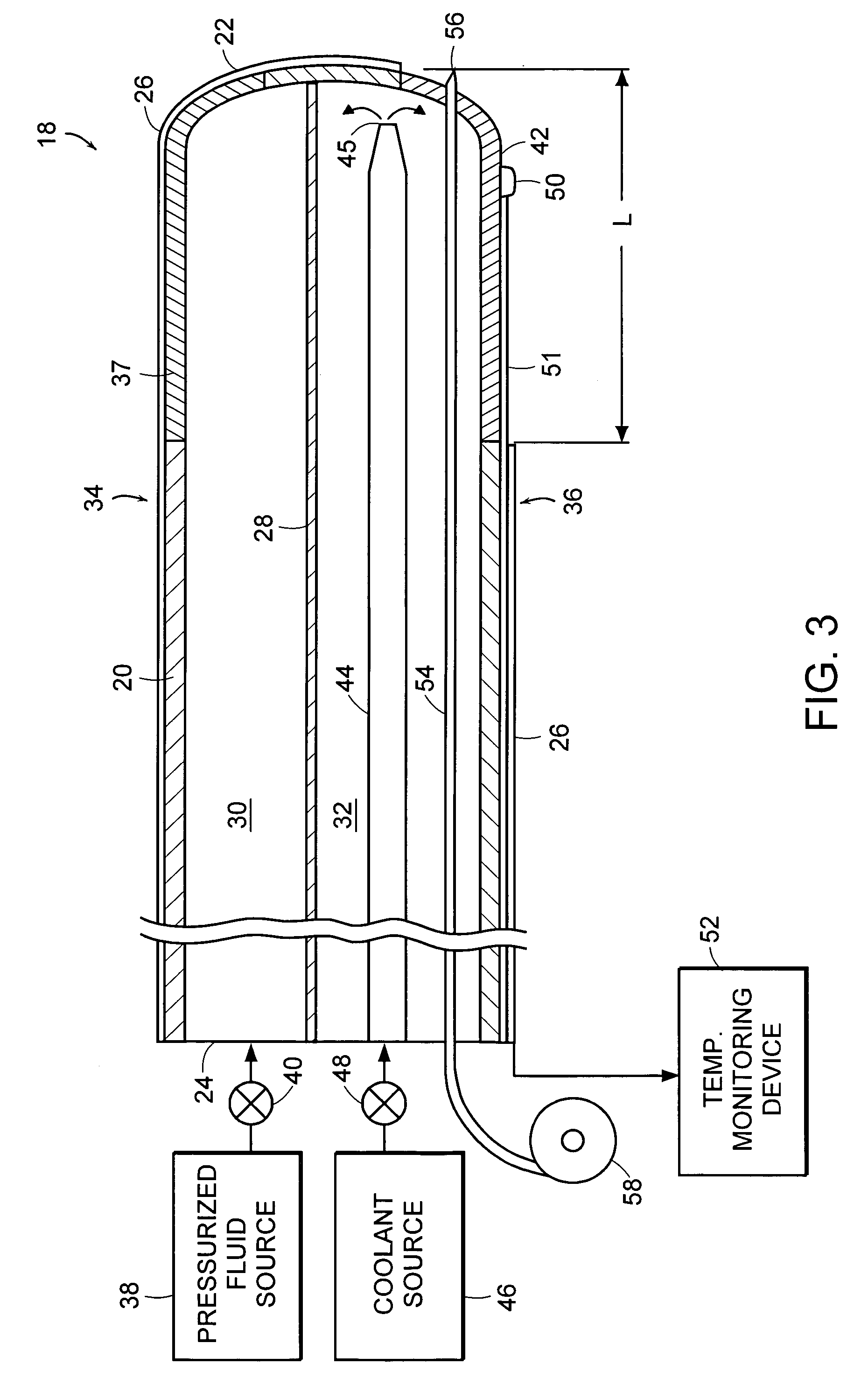Device for neurocryo analgesia and anesthesia
a neurocryoanalgesia and anesthesia technology, applied in the field of cryoanalgesia, can solve the problems of unsuitable cryoanalgesia cyrocatheter, undesirable after effects, chemical-based approach drawbacks, etc., and achieve the effect of stopping neuronal nerve conduction
- Summary
- Abstract
- Description
- Claims
- Application Information
AI Technical Summary
Benefits of technology
Problems solved by technology
Method used
Image
Examples
Embodiment Construction
[0020]The highly structured neuroaxis (the spinal cord and spinal nerves) lends itself to cryoanalgesia techniques to produce analgesia or anesthesia of body parts innervated by the target nerve tissue. This is accomplished by selective cooling or freezing of the target neuronal tissue using a neuro-cryocatheter system to induce lesions along the neuroaxis. The neuro-cryocatheter system is used to diagnose, monitor and interfere with nerve conduction along the spinal cord axis by invading the cerebrospinal fluid canal (subarachnoid space) by way of percutaneous puncture. The cooling or freezing of neuronal tissue produces analgesia or anesthesia (i.e., “cryoanalgesia”) by impairing nerve conduction of the targeted neuronal tissue. The neuro-cryocatheter system of the present invention may be used not only on human patients but on other animals, particularly vertebrates, as well.
[0021]Referring to the drawings wherein identical reference numerals denote the same elements throughout t...
PUM
 Login to View More
Login to View More Abstract
Description
Claims
Application Information
 Login to View More
Login to View More - R&D
- Intellectual Property
- Life Sciences
- Materials
- Tech Scout
- Unparalleled Data Quality
- Higher Quality Content
- 60% Fewer Hallucinations
Browse by: Latest US Patents, China's latest patents, Technical Efficacy Thesaurus, Application Domain, Technology Topic, Popular Technical Reports.
© 2025 PatSnap. All rights reserved.Legal|Privacy policy|Modern Slavery Act Transparency Statement|Sitemap|About US| Contact US: help@patsnap.com



